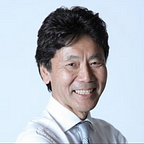A lush green 38th parallel to be a symbol of SDGs goal 16, instead of symbolizing the US-China cold war
The 4-kilometer wide, 250 kilometer long 38th parallel stretches across the entire width of the Korean Peninsula. Up to two million soldiers guard the world’s most heavily fortified border dividing the country into north and south. The peninsula has a combined population of about 70 million, but the tight security measures have left the environment in the DMZ (Demilitarized Zone) largely undisturbed for the past 68 years. The DMZ and its adjacent Civilian Control Zone are unique with wetlands, forests, estuaries, mountains, coastal islands, and agricultural fields. After the 1953 Korean war armistice, the DMZ naturally became a home for endangered animals like the white-naped and the red-crowned crane, the Asiatic black bears, and the Korean tigers.[1] This lush green 38th parallel green belt to be a symbol of SDGs goal 16, instead of symbolizing the US-China cold war.
The 2030 Agenda for Sustainable Development places disarmament, arms regulation, peace and security squarely within the scope of development policies. Goal 16 — focusing on promoting peaceful societies, providing access to justice, and building effective institutions. Adequate arms regulation is deeply relevant for reaching other Goals, from gender equality to safe and sustainable cities, from economic growth to quality education. But to finance such efforts through ODA (Overseas Development Assistance), which encourages the rich nations to keep their pledges to assist the project with 0.7% of the GDP, but it is far from reality. Yes, the SDGs must be financed, but it is very difficult to persuade voters of democratic countries to spend their tax money for a distant conflict area. No political candidate would promise to spend tax payer’s money for the SDGs goal-16, instead of a medical, pension, education, jobs, and security of the home country.
The six-party talk countries, excluding DPRK (North Korea), as we don’t have data, have a total of USD 1.187 trillion military spendings per year[2]; the US 3.7%, Russia 4.3%, China 1.7%, ROK 2.8%, Japan 1.0% of the respective country’s share of GDP.
On top of this, the recent report [3] issued by the US Congressional Budget Office, shows nearly every element of the nuclear weapons to be upgraded over the next 20 years. The budget is $1.2 trillion over 2017–2046. It’s a big budget.
Now, ending the Korean war, and creating a NEANWFZ (Northeast Asia Nuclear Weapons Free Zone) will cost us nothing. Nothing, except diplomatic and civil society efforts to push through such international treaty by supporting and raising political will. The SDGs goal-16, promoting peaceful societies, providing access to justice, and building effective institutions are the identical agendas proposed by the NEANWFZ 3+3 comprehensive approach. It is called 3+3 because the proposed international treaty involving ROK (South Korea), DPRK (North Korea), Japan as three countries forming a Nuclear Weapons Free Zone, and surrounding three Nuclear Weapons Countries such as the US, China, Russia to give legally binding security assurance not to attack or threaten the zone with Nuclear Weapons.
The lush green 38th parallel emerged over 67 years of armistice, now is the time to terminate the Korean war, mutually declare a non-hostile intent, express equality of sovereignty, terminate UN Security Council sanctions against DPRK, support their economy and energy conditions, establish a regional Permanent Security council, and establish NEANWFZ (Northeast Asia Nuclear Weapons Free Zone) with 3+3 comprehensive approach, for a sustainable peace which contributes to realizing the SDGs.
[1] Korea’s DMZ: The thin green line by Nick Easen for CNN https://edition.cnn.com/2003/WORLD/asiapcf/east/08/22/korea.bio.dmz/
[2] SIPRI Military Expenditure Database 2020
[3] Approaches for Managing the Costs of U.S. Nuclear Forces, 2017 to 2046https://www.cbo.gov/system/files/115th-congress-2017-2018/reports/53211-nuclearforces.pdf
